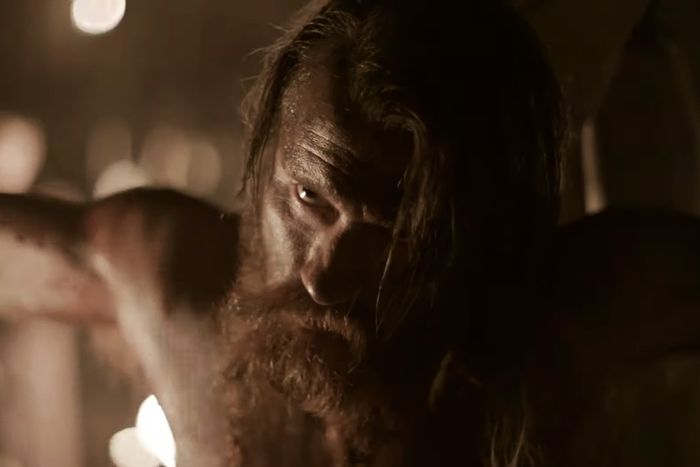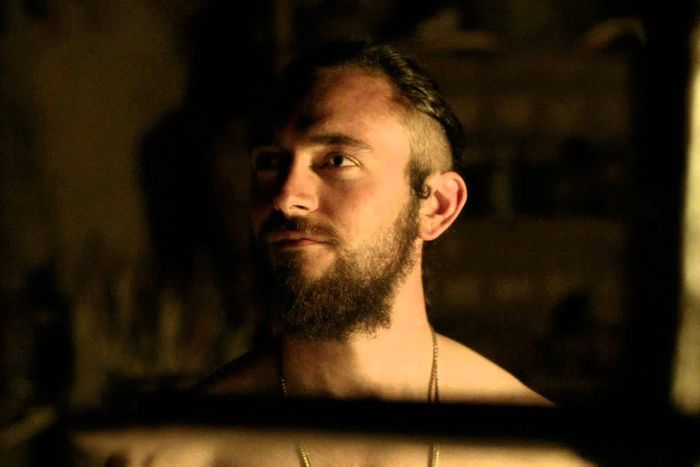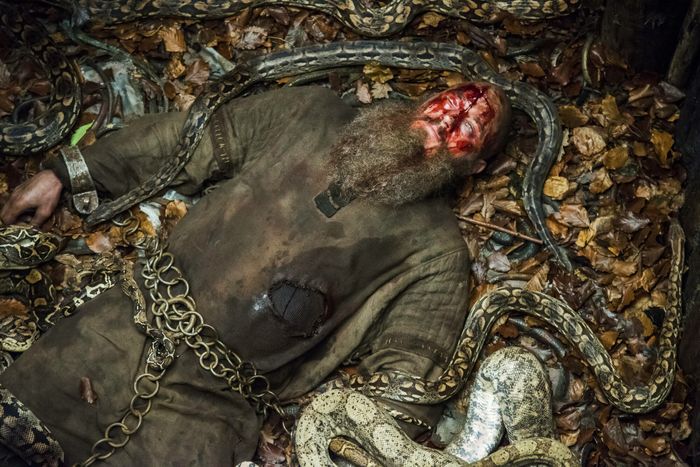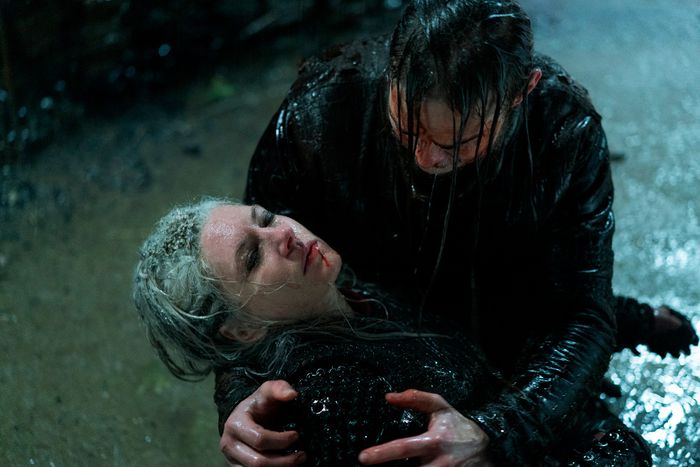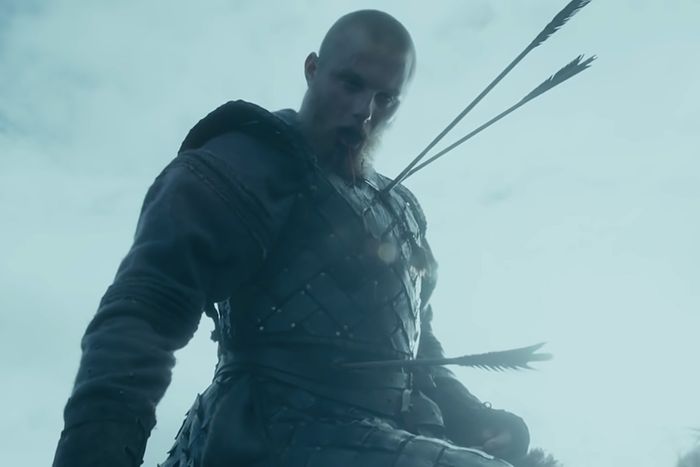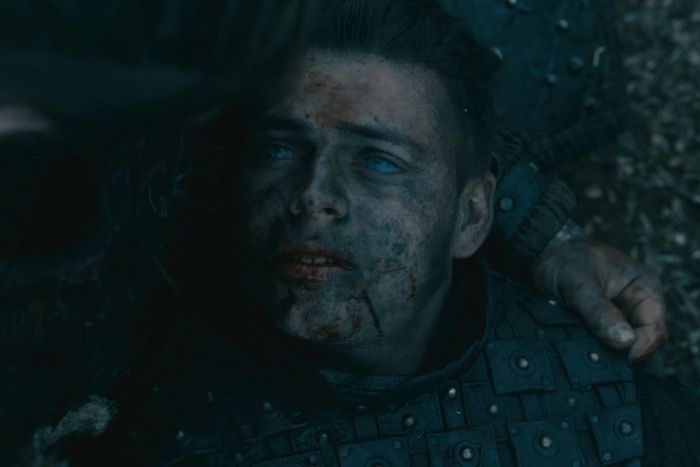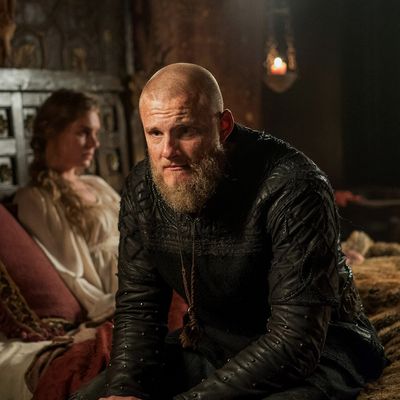
Vikings was known for its epic battles and bloody encounters, so it wasn’t surprising that by the time the credits rolled on the series finale, there were less than a handful of original characters left breathing. Saying good-bye to characters, including the show’s charismatic lead, Ragnar Lothbrok (Travis Fimmel), had always been part of the series’ design — and its appeal to viewers. “I think that if you’re writing a show called Vikings, you’re inevitably going to deal with quite a lot of death,” quips creator Michael Hirst. Now that the mythical drama has concluded, we asked Hirst to walk us through some of the most memorable and devastating deaths in Vikings’ history.
Clearly, major spoilers for all of Vikings lie ahead.
Jarl Borg
Cause of death: Blood-eagled by Ragnar
One of Vikings’ earliest antagonists, Jarl Borg (Thorbjørn Harr) found that his scheming couldn’t save him after being captured by his rival Ragnar and former ally Rollo (Clive Standen) in season two. In retaliation for Borg’s recent attack on Kattegat, Ragnar sentenced him to die by blood eagle, a brutal execution that remains the bloodiest death depicted on the show.
Though plenty of Vikings’ most horrific scenes come from the twisted imagination of Hirst, this was one instance where credit’s due elsewhere. “The manner of death was Travis’s idea, not mine,” Hirst reveals. As the creator recalls, Fimmel strongly felt the Götaland leader’s death should be “as violent as possible” because Borg had not only put Ragnar’s family in danger but made a fool of him. By this stage in the show, Hirst says, Fimmel was so deep into playing Ragnar that “if he felt and said something about the character, I let him do it.”
The resulting scene was an excruciating six minutes of television: Ragnar sliced open Borg’s back, separated his ribs from his spine, and draped his lungs over his shoulders. Even the citizens of Kattegat flinched in horror, with Borg’s second wife, Torvi (Georgia Hirst), fainting at the sight. But throughout fulfilling his gruesome duties, Ragnar maintained a look of serenity that “hinted at depths in Ragnar’s character that one hadn’t possibly considered before” — and that viewers would see play out again in Ragnar’s murder of Yidu (Dianne Doan) in season four.
Athelstan
Cause of death: Stabbed by Floki
After Athelstan (George Blagden) was taken captive by the pagans, the kindhearted former monk quickly became as fundamental to Vikings as its leading hero due to his tender, loving relationship with Ragnar. However, by the time Athelstan recommitted to the Christian faith in the third season, Hirst understood that there was little left to do with the fan-favorite character, having already put him “through the mill quite a few times, including being crucified.”
Choosing to have Floki, a pagan fundamentalist who was upset with Ragnar’s increasing interest in Christianity, be the one to kill Athelstan felt “totally logical,” per Hirst. But while the details of how and when Athelstan would die —stabbed by Floki mid-prayer at home — came relatively easy to him, the long-term significance of Athelstan’s death was far trickier for the creator to figure out. “I had to start thinking very carefully and deeply about what the consequences of Floki’s actions would be,” Hirst recalls. “And it did develop into a game-shifter, essentially.”
Athelstan’s death wound up having a “profound effect” on Ragnar, and the legendary Viking never fully recovered from the loss. But even once the monk’s body was long buried, Hirst realized that, “like many other characters I killed off, I missed Athelstan.” So over the years, the creator found new ways to honor how Athelstan and Ragnar’s legacies were intertwined despite Floki’s murderous attempt to sever them. These homages to Athelstan continued even through the series finale, in which the monk’s son, Alfred (Ferdia Walsh-Peelo), gave the Viking’s son, Hvitserk (Marco Ilsø), the baptismal name of Athelstan in one of the show’s stirring final scenes.
Ragnar
Cause of death: Thrown into a pit of venomous snakes
Ragnar’s death in the fourth season completely shifted the trajectory of the show, which had been built around his pursuits up until that point. However, the famed Viking was originally slated to die much earlier on. “In my very initial outline for the show, Ragnar actually died at the end of season one,” Hirst says. “But, of course, once I started writing … I wanted to continue to be with him.”
For four years, the creator found ways to stay with Ragnar through adventures that spanned decades and continents. But eventually Hirst realized the time had come. “The only thing to do was to give him the extraordinary death that was recorded in the sagas,” he recalls.
Though Vikings played very loose with the history and lore that inspired it, for Ragnar’s death, Hirst chose to stay true to the legendary account: that Ragnar was dropped from a cage into a pit of vipers and bitten to death. This meant that the final episodes viewers spent with Ragnar documented the fallen hero in captivity, first by King Ecbert (Linus Roache) and then by King Ælle (Ivan Kaye). But Hirst still found ways to showcase Ragnar’s exceptional cunning and fortitude by showing that the devious Viking orchestrated his own death to spur his sons into uniting together to seek revenge.
The plan succeeded, but Ragnar’s sons didn’t stop seeking to honor their father once they had defeated the English kings nor did time fade the impact Ragnar had on Viking culture. “Ragnar is still a presence in the show right down until the end,” Hirst says. “They sing about him in the great halls; the sons refer to him all the time; they compare themselves to him. So his death, although it was very momentous, wasn’t the end of Ragnar.”
Lagertha
Cause of death: Stabbed by Hvitserk
Lagertha’s (Katheryn Winnick) death was one that Vikings fans had dreaded ever since the Seer (John Kavanagh) revealed she was fated to be killed by a son of Ragnar’s in season four. As a result, viewers were constantly on edge whenever the famed shield-maiden found herself in a dangerous situation — a tension they were subjected to quite often.
“I just did everything to Lagertha,” Hirst says of the “extreme experiences” he put the character through. “Everything happened to her, until finally the character herself said she wanted to retire … But, of course, you can’t stop being famous.”
Lagertha’s short-lived attempt at a peaceful life in season six was interrupted when White Hair (Kieran O’Reilly) and his band of exiles attacked her farming settlement. The battle ended with the shield-maiden defeating the bandit in an impressive face-off that ranks as one of the show’s greatest fight sequences. But after surviving the epic battle, an injured Lagertha rushed back to Kattegat, only for fate to finally catch up to her in the streets of her old home. Upon seeing Lagertha arrive, a hallucinating Hvitserk mistook her for the half-serpent Ivar (Alex Høgh Andersen) from his vision and stabbed the weakened warrior to death.
While the death of Lagertha left a big absence in the show, Hirst embraced the opportunity that killing her before the series finale provided, giving Lagertha a “wonderful send-off” worthy of all she had accomplished. The episode after Lagertha’s death was dedicated to her funeral, an event that allowed the characters time “to pause to remember and reflect on her life,” says Hirst. “And it gave the audience time to reflect on what she’d done and who she’d been. And she too assumed mythic status.”
Bjorn
Cause of death: Stabbed by Ivar, shot with arrows by the Rus army
When Ivar stabbed Bjorn (Alexander Ludwig) during the climactic battle between the Vikings and the Rus in season six’s mid-season finale, the fate of the seasoned warrior was left unknown — but the lingering question wasn’t whether Bjorn would survive but whether his inevitable death would be one worthy of his father’s legacy.
“Bjorn was already a semi-legendary figure to other Vikings before the Rus attack … but you could say that, in some ways, he hadn’t totally lived up to expectations,” says Hirst, referencing Bjorn’s failures as a king, a husband, and a father. “If he’d died when he was first stabbed by Ivar, then he wouldn’t necessarily have reached the pantheon; he wouldn’t have become as mythic as his father. But it’s the way of his death that ensured that he would.”
Using his last bit of strength, a dying Bjorn put on his armor once more and met the Rus on the battlefield for one final showdown. The sight of this warrior whose will was strong enough to defy death itself, if only temporarily, inspired Bjorn’s people to fight with such ferocity that they made quick work of the Rus and successfully defended Kattegat. Bjorn’s last stand was so extraordinary that his “death became him,” says Hirst. “He was redeemed by doing what he did.”
Ivar
Cause of death: Stabbed by a Wessex soldier
Ever since Hvitserk made the inexplicable decision to side with Ivar in season five’s civil war, the brothers — and fans — were convinced the pair was being drawn together by fate for the day that one would eventually kill the other. This theory had been so well established within the show that it nearly felt like fact, which is what made Ivar’s decision to sacrifice himself to save Hvitserk during Vikings’ series finale such a surprising reversal.
Hirst says he didn’t always plan to give Ivar such a noble ending, but after he became worried Ivar “was slightly too one dimensional,” he set out to show a more vulnerable side of the ruthless warrior in the final season. Through Ivar’s time with the Rus and his “almost fatherly” relationship with Prince Igor (Oran Glynn O’Donovan), the show slowly began revealing a more vulnerable side of the former tyrant. So by the time Ivar insisted on taking Hvitserk’s place on the battlefield against Wessex, viewers had been primed not only to understand Ivar’s unexpected display of brotherly love but to mourn for his death when a nameless soldier took his life.
“Before his death, [Ivar] is someone you can care for,” Hirst says, pointing out how the once “vicious” character was so unguarded in his final moments, even admitting he was scared. “This is not an Ivar we’ve come to expect, and it’s always wonderful when something different is revealed in a totally unexpected way.”


